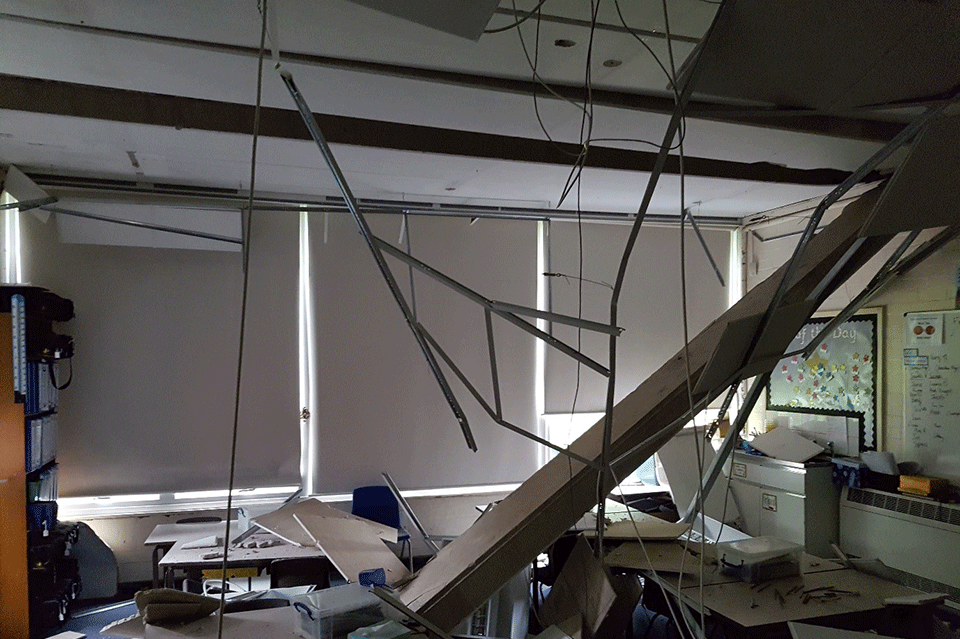RAAC Surveys
Reinforced Autoclaved Aerated Concrete, also known as RAAC, is a steel-reinforced concrete, and because of its fire resistance, ability to hold heat, and lightweight qualities, it became in high demand. RAAC was commonly used in school, college, and healthcare buildings from the 1960s to the mid-80s. The lightweight and bubbly type of concrete can still be detected in buildings today, using a RAAC survey
What is a RAAC Survey?
You may be wondering what a RAAC survey will include. The survey will need to be conducted by a Building Surveyor, as there are risks of asbestos being present. The Building Surveyor will be trained on how to detect if RAAC is present on your site and will be able to work safely in the environment, which could be at height or in a confined space.
During the survey, once the Building Surveyor has detected and located the RAAC, they will conduct a technical report. They will also remove a small sample from the area, this will indicate the roof’s condition. The technical report will provide a clear set of recommendations to get your site back into a safe and risk-free environment. However, there are a few things you can do as the building owner that will help you assess the likelihood that your building may have RAAC planks before having a Building Surveyor professionally check:
- Check to see if your building was constructed between the 1960s to the 1980s – this was when RAAC was in high demand
- Find out if surrounding buildings in your area contain RAAC
- Go through any building plans or records and keep an eye out for any mention of RAAC

Why do You Need RAAC Survey?
In 2018, the Local Government Association (LGA) and the Department for Education wanted to make school building owners and healthcare trusts aware of the risks that come with having RAAC in the building structure. This was in relation to a roof collapsing, which was constructed with RAAC planks. RAAC is not as strong as traditional concrete because of its lightweight properties, meaning it is more likely to erode. RAAC planks are known to have a 30-year lifespan, and since RAAC roof planks were most recently used in the 1980s, they are likely to have exceeded this life span.
Therefore, there are a lot of risks at stake that could put students, teachers, and visitors in danger. Including collapsing ceilings in classrooms, without much warning. Here are a few signs that could indicate your roof is getting closer to failing:
- A recent or active leak is visible. A leak could direct you straight to the RAAC planks.
- Adding extra weight to the roof from equipment, plant, or new waterproofing. The RAAC planks can’t hold additional weight, if the limit is exceeded it could result in extreme consequences.
- If there is visible cracking in the planks, the area should be kept clear and removed immediately.
If you suspect your building could potentially contain RAAC, contact us today to arrange an initial check to ascertain if further action is necessary.